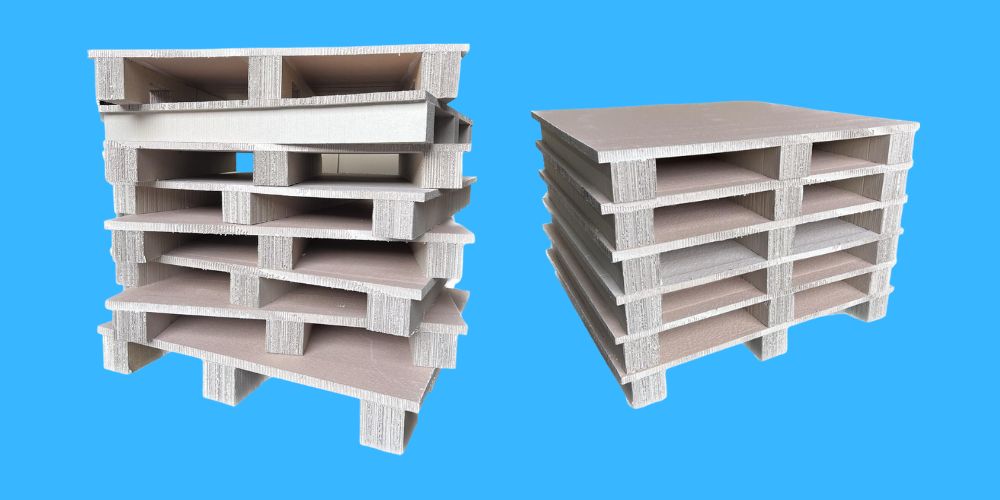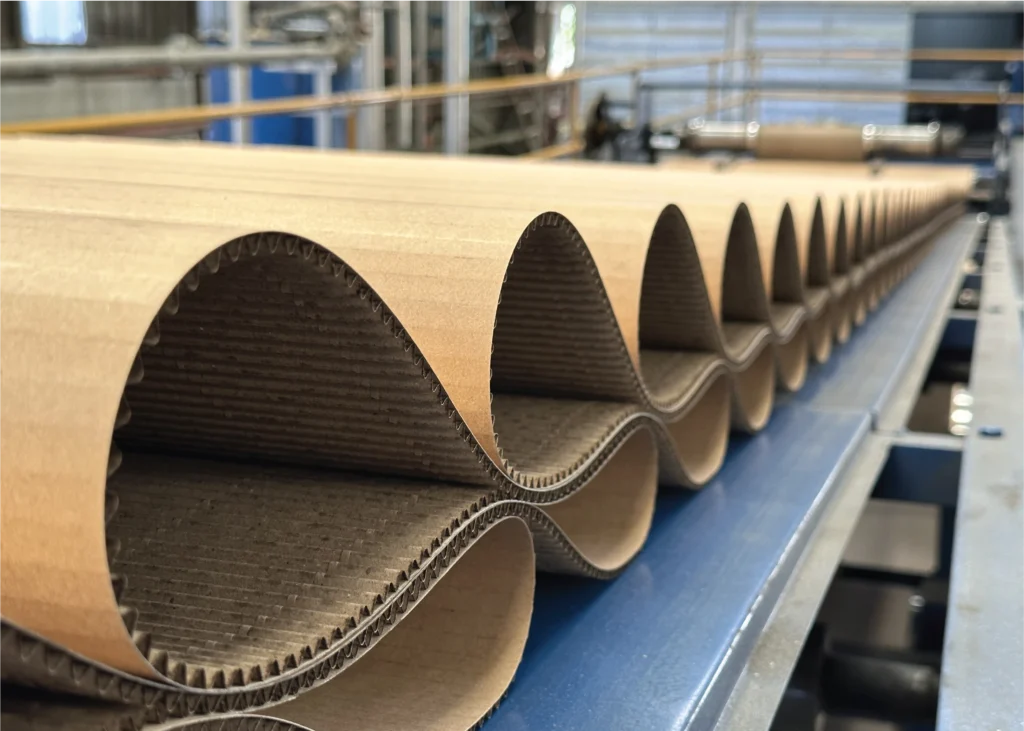As a reliable supplier of eco-friendly paper pallets, we offer lightweight, durable, and 100% recyclable solutions. Ideal for businesses aiming to reduce waste and carbon footprint, our high-quality paper pallets are a sustainable alternative to wooden pallets, supporting industries in achieving environmental responsibility.
As a premier supplier of eco-friendly paper pallets, we offer lightweight, durable, and 100% recyclable solutions. Ideal for businesses aiming to reduce waste and carbon footprint, our high-quality paper pallets are a sustainable alternative to wooden pallets, supporting industries in achieving environmental responsibility.
Their lightweight nature translates into lower transportation costs, while their recyclability ensures they can be easily reintegrated into the paper production cycle, minimizing waste. Ideal for a wide range of applications across various industries, our paper pallets offer a reliable and environmentally responsible solution for shipping and storage needs.
By choosing our eco-pallets, businesses not only enhance their operational efficiency but also contribute positively to reducing the carbon footprint, aligning with global efforts towards a greener planet.

Paper pallets are gaining traction across various industries for their lightweight, strength, and environmental benefits. Ideal for shipping and logistics, their reduced weight can significantly cut down on fuel consumption and costs. Exporters particularly appreciate paper pallets because they bypass the need for pest treatments required for wood pallets, simplifying the export process.
In the retail sector, their ease of recycling and storage efficiency is a major advantage. The pharmaceutical and healthcare industries value paper pallets for their cleanliness and safety, while the electronics industry relies on them for the protection of fragile goods. Environmentally conscious companies are increasingly adopting paper pallets to align with sustainability goals. Additionally, these pallets are useful in event planning for easy-to-assemble displays and in the food industry for contaminant-free transportation.
Overall, the versatility, eco-friendliness, and cost savings of paper pallets make them an attractive choice for businesses aiming to improve operational efficiency and environmental impact.
Paper pallets offer a multitude of benefits that make them an attractive choice for environmentally conscious businesses. Firstly, they are incredibly lightweight, which can significantly reduce shipping costs and improve handling efficiency. Their construction from 100% recycled paper not only minimizes environmental impact but also supports sustainability by contributing to the circular economy.
Unlike wooden pallets, paper pallets do not require fumigation or heat treatment, further reducing their ecological footprint. They are also customizable to various sizes and specifications, providing flexibility for different shipping needs.
Additionally, their recyclable nature ensures that they can be easily broken down and repurposed at the end of their lifecycle, unlike plastic pallets which can be more challenging to recycle. With their eco-friendly attributes and cost-saving potential, paper pallets present a practical, sustainable packaging solution for businesses aiming to reduce their carbon footprint and waste generation.

In the evolving landscape of logistics and packaging, the choice between corrugated paper pallets and wood pallets is becoming increasingly significant. Each type of pallet offers distinct advantages and limitations, making the decision critical for businesses focused on efficiency, sustainability, and cost-effectiveness.
Pallet capacity refers to the maximum weight or volume that a pallet can safely hold and transport. This capacity is determined by the pallet’s design, material, and construction quality. Understanding a pallet’s capacity is crucial in logistics to ensure the safe and efficient transportation of goods.
Alternatives to paper pallets include wooden pallets, plastic pallets, metal pallets, and presswood pallets. Wooden pallets are traditional and widely used for their durability and strength. Plastic pallets offer lightweight, durability, and resistance to moisture and pests, making them suitable for a variety of environments.
Metal pallets, typically made from steel or aluminum, are used for heavy loads and in industries where hygiene is crucial. Presswood pallets, made from compressed wood fibers, provide a lightweight and eco-friendly option similar to paper pallets but with different structural properties. Each alternative has its own set of advantages depending on the specific requirements of the goods being transported or stored.
The number of times a pallet can be recycled and reused depends on the material it’s made from and how it’s handled. Wooden pallets, for instance, can often be repaired and reused multiple times, typically ranging from 3 to 15 cycles before they’re too damaged. Plastic pallets have a longer lifespan, potentially being reused up to 100 times or more due to their durability and resistance to moisture and pests. Metal pallets can last even longer, offering hundreds of uses with proper care.
The recyclability of paper pallets is generally lower in terms of reuse due to their less durable nature, but they can be recycled into new paper products after their single use. The actual lifecycle of a pallet will also vary based on the weight of loads it carries, the distances it travels, and the conditions it’s exposed to.

Golden Corrugated Box (M) Sdn Bhd (GCB) was formerly known as Corrugated Carton Packaging Enterprise (CCPE) and it was incorporated since 24th July 1996. With its humble beginning in a rented premises, the company commenced its business activity as a converter of corrugated carton boxes.
No:7, Jalan Perusahaan Beranang 2, Kawasan Perindustrian Beranang, 43700 Beranang, Selangor Darul Ehsan, Malaysia.
© 2025 Golden Corrugated Box (M) Sdn Bhd. 200001020200 (522807-H). All Rights Reserved